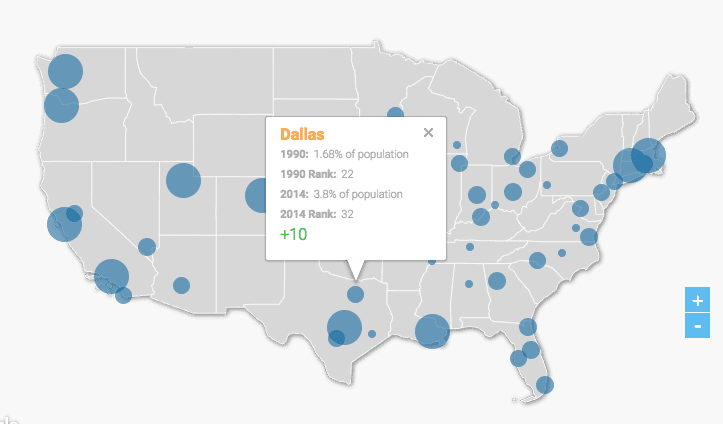New study shows the gays are moving to red states

A new study by ConsumerAffairs.com, using data from Gallup and the U.S. Census, found that the biggest increases in the LGBT community are in red states. Not surprising, since the gay community always moves to crappy places and makes them better.
The interactive map compares data from 1990 to 2014 (the most recent data available).
Of the 20 cities that saw a positive change in their ranking, 11 were in traditionally red states including Virginia, Kentucky, Louisiana and Texas.
Of cities in reliably red states, Salt Lake City saw the biggest increase in the size of its LGBT community as a portion of the total population, moving from 39th place in 1993 to 7th as of 2014.
Traditionally LGBT-friendly cities like Minneapolis, San Diego and New York saw a drop in their national rankings, however.
Of course, there’s no real census data that includes sexual orientation or gender identity. In the 2010 census, there was a way to be counted as gay by claiming to be married if two people of the same sex lived together. No questions on the census would have indicated that a person was transgender. Gallup has some data from its polling.
But according to the data available, here’s are some rankings based on percent of that city’s population.
• Austin ranks No. 3 nationally with 5.3 percent of the population identifying as LGBT.
• San Francisco holds the No. 1 spot with 6.2 percent of the population identifying as LGBT.
• After San Francisco comes Portland at No. 2 with 5.4 percent of its population LGBT. Seattle is fifth with 4.8 percent.
• New Orleans ranks fourth with 5.1 percent of its population identifying as LGBT. Not surprising, because the one place in New Orleans that didn’t have to evacuate and that wasn’t destroyed during Katrina was the French Quarter.
Questionable are the stats from Dallas and Houston. Dallas ranks 32nd nationally with 3.8 percent of the population who claim to be part of the LGBT community. Houston is even lower in the 42nd spot with only 3.3 percent claiming to be LGBT. With discrimination more common in places like Texas, fewer people admit to being LGBT in red states than in blue.
















